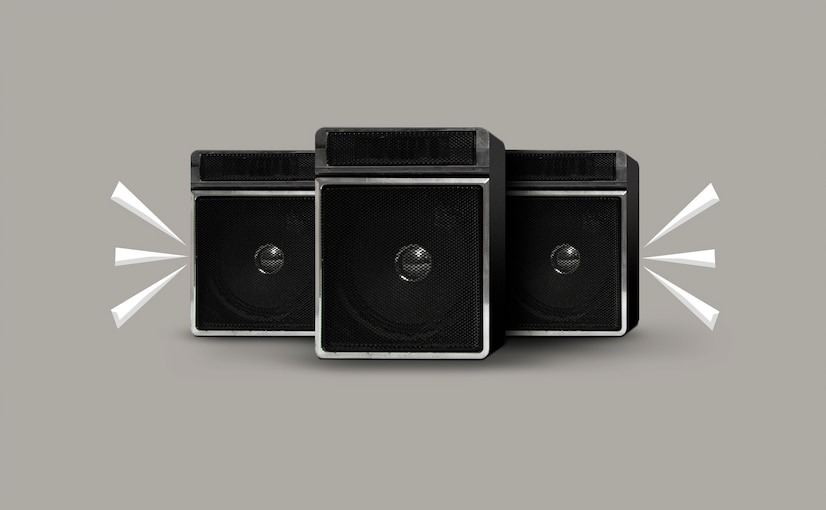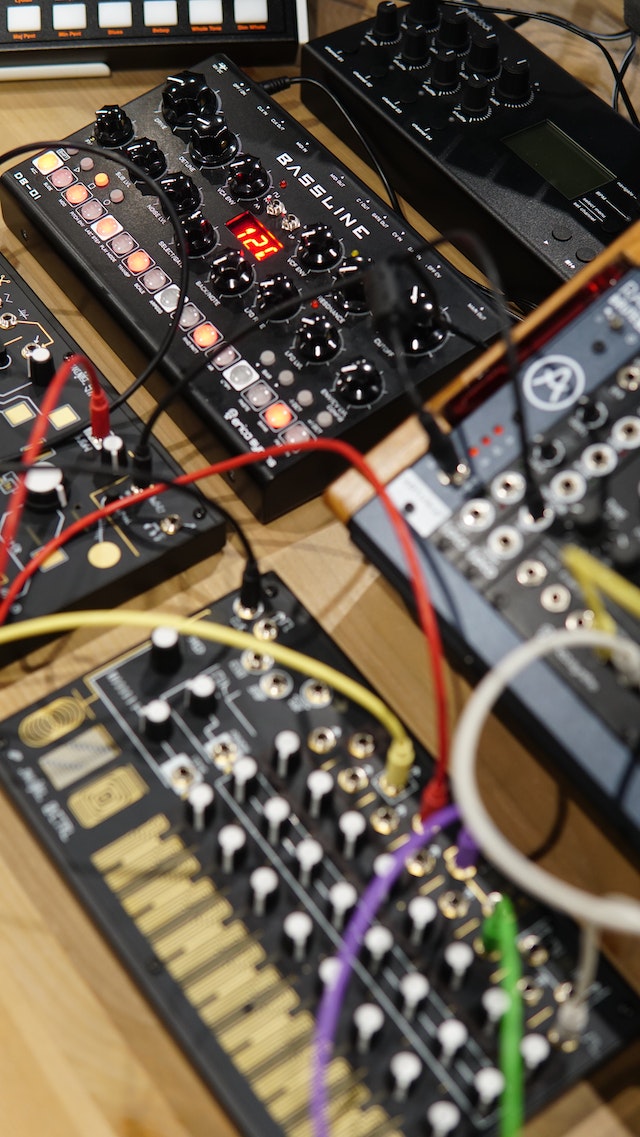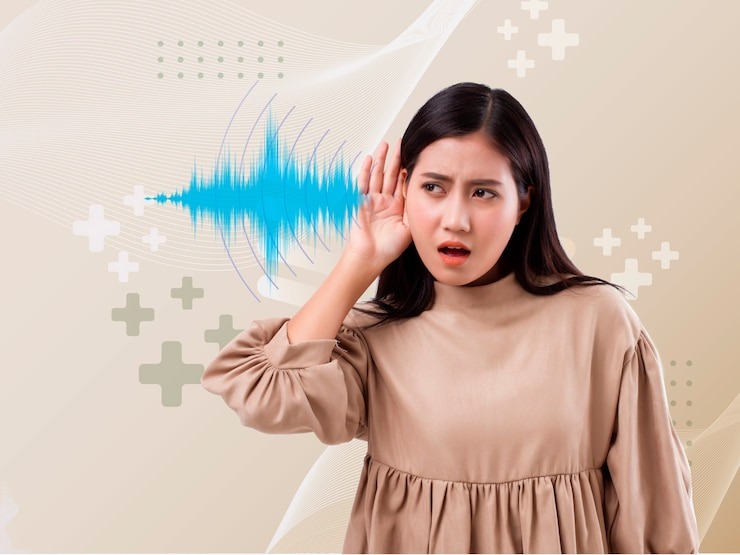We independently review all recommended products and services. When you make a purchase using our links, we may earn a commission.
15 Best Low Frequency Noise To Annoy Neighbours: What Does It Mean

We independently review all recommended products and services. When you make a purchase using our links, we may earn a commission.

If you've ever wondered about the art of low frequency noise to annoy neighbours, you've come to the right place.
I'm thrilled to share my vast experience in this intriguing domain and shed light on the 15 best low frequency noise to annoy neighbours that can add a touch of mischief to your life.
But before we dive in, let's take a moment to understand the significance of low frequency noise to annoy neighbours and its impact on neighbors.
According to a recent study by the Noise Control Foundation, noise pollution is a rising concern, with low frequency noise being a prominent contributor.
While our mischievous endeavors may tempt us to push the boundaries, it's essential to maintain a balance between fun and responsible behavior.
In this exhilarating blog series, we'll not only uncover the 15 best low frequency noise to annoy neighbours, but we'll also explore the motivations behind intentional low frequency noise generation and the ethical considerations that arise.
We'll discuss alternative approaches to address noise concerns and foster harmonious relationships with our neighbors.
So, if you're ready for this journey of mischief, humor, and responsible fun, fasten your seatbelts and join me as we discover the secrets of low frequency noise to annoy neighbours and also that will leave your neighbors both perplexed and intrigued.
Let's dive in and explore the fascinating world of sonic pranks that will make your mischievous heart skip a beat.
Low frequency noise, the mischievous troublemaker of the sound world, can leave our neighbors perplexed and annoyed.
Let's delve into what low frequency noise is all about.
Low frequency noise refers to those deep, rumbling vibrations that are typically characterized by a lower pitch. Unlike high-frequency sounds, which we're more accustomed to hearing, low frequency noise has longer wavelengths and can travel through solid objects like walls and floors.
It's like a stealthy intruder that creeps into the lives of our unsuspecting neighbors.
Low frequency noise can originate from various sources, both natural and man-made.
Some common sources include heavy machinery, industrial equipment, air conditioners, subwoofers, bass-heavy music, and even certain appliances like refrigerators or HVAC systems.
The vibrations produced by these sources create the low frequency noise that can disturb the tranquility of our neighbors' homes.
Low frequency noise possesses some unique characteristics that make it an effective annoyance tool.
Firstly, it tends to be persistent and omnipresent, seeping through walls and permeating the surroundings. Secondly, it can be challenging to locate the exact source of low frequency noise due to its ability to travel and propagate over long distances.
This adds an extra layer of frustration for our neighbors as they try to pinpoint the origin of their sonic torment.
To mitigate the effects, soundproofing techniques, such as insulation or acoustic panels, can help minimize transmission.
Creating distance from noise sources, using white noise machines, or wearing earplugs can provide relief.
Low frequency noise is not immediately dangerous, but prolonged exposure to high levels can negatively impact health and well-being, causing stress, sleep disturbances, and fatigue.
Vibrations from low frequency noise may affect structures.
Excessive intentional noise, like amplified bass, can lead to annoyance and potential hearing damage.
Individual sensitivity varies, and regulations exist to maintain acceptable noise levels.
Consideration for neighbors is important. Consult professionals or local authorities for specific guidance.
Now that we have a grasp of what low frequency noise is, let's dive into its impact on our dear neighbors.
This silent troublemaker can have significant effects on their well-being, both physically and psychologically.
So, let's explore the consequences of low frequency noise and gain a deeper understanding of its disruptive power.
According to a case study conducted by the Environmental Protection Agency (EPA), prolonged exposure to low frequency noise has been linked to various health concerns and quality-of-life issues for affected individuals.
Low frequency noise can have tangible physical effects on our neighbors.
The vibrations caused by these deep rumblings can be felt in their bodies, leading to discomfort and unease. Imagine trying to relax or carry out daily activities with an incessant low rumble as your unwelcome companion.
It can hinder their ability to find solace and peace within their own homes.
Beyond the physical discomfort, low frequency noise can also take a toll on our neighbors' mental well-being. Prolonged exposure to this persistent annoyance can induce stress, anxiety, and a general sense of uneasiness.
It disrupts their ability to concentrate, relax, and find respite in their personal spaces.
Over time, the constant intrusion of low frequency noise can erode their quality of life and overall happiness.
One of the most detrimental effects of low frequency noise on neighbors is its disruption of sleep patterns.
As we all know, sleep is essential for our physical and mental health.
The continuous presence of low frequency noise can lead to sleep disturbances, causing fatigue, irritability, and difficulties in maintaining a healthy sleep routine.
Lack of proper rest can have a cascading effect on overall health and well-being, impacting productivity, mood, and overall quality of life.
Living with constant low frequency noise can significantly affect the quality of life of our neighbors.
It robs them of the peace and tranquility they deserve in their own homes.
The constant intrusion can create a sense of helplessness, frustration, and dissatisfaction, leading to strained relationships and diminished overall well-being.
It's essential to recognize the far-reaching consequences of our mischievous actions and consider the impact on others' lives.
When it comes to low frequency noise and neighbor annoyance, it's essential to understand the legal implications and noise regulations that govern our actions.
Let's explore these considerations to ensure we stay within the boundaries of the law and maintain a harmonious neighborhood.
According to a comprehensive study conducted by the Noise Control Foundation, noise regulations are in place to protect individuals from excessive and intrusive noise pollution.
Noise regulations vary depending on the jurisdiction and locality.
Local governments often have specific ordinances and bylaws that dictate acceptable noise levels and times during which certain activities, like construction or loud music, are restricted.
Familiarizing ourselves with these regulations is crucial to avoid legal repercussions.
Intentionally generating low frequency noise to annoy neighbors can have legal consequences.
If a neighbor files a noise complaint and it's determined that the noise exceeds permissible limits or violates local regulations, the responsible party may face fines, penalties, or even legal action.
It's essential to recognize that our mischievous intentions should never override the rights and well-being of our neighbors.
Neighbor disputes arising from noise annoyance can be a headache for everyone involved.
Rather than escalating tensions, it's advisable to explore mediation or alternative dispute resolution methods. Mediation allows parties to discuss concerns, find compromises, and reach mutually agreeable solutions. Engaging in open and respectful communication can help preserve neighborly relationships and prevent unnecessary conflicts.
While low frequency noise can be an annoyance, intentionally generating it to disturb our neighbors ventures into a darker territory.
Let's delve into the motivations behind such behavior and the ethical considerations that come into play.
Intentionally generating low frequency noise to annoy neighbors can stem from various motivations.
It may be driven by a desire for retaliation, a need for attention, or even a sense of power or control.
However, it's important to reflect on whether these motivations align with maintaining a healthy and respectful community.
Engaging in intentional low frequency noise generation raises ethical concerns.
It's crucial to consider the impact our actions have on the well-being and peace of our neighbors.
Pranks and mischief should never cross the line into causing harm or distress to others.
Responsible behavior involves finding a balance between fun and respect for others' rights.
It means recognizing the boundaries and limits of neighborly interaction and avoiding actions that could strain relationships or create unnecessary conflicts.
When it comes to addressing noise concerns and maintaining a peaceful coexistence with our neighbors, there are alternative approaches that promote understanding and respect.
Let's explore these strategies to find a balance between our mischievous tendencies and considerate behavior.
One of the most effective ways to address noise concerns is through open and honest communication.
Engage in a friendly conversation with your neighbors, express your willingness to address any issues, and listen to their concerns.
By understanding each other's perspectives, you can work together towards finding mutually agreeable solutions.
Consider soundproofing your living space to minimize noise transmission.
Adding insulation, using acoustic panels, or sealing gaps in walls and windows can help reduce the impact of low frequency noise.
Additionally, investing in noise-cancelling headphones or white noise machines can provide personal relief when needed.
If conflicts persist, seeking mediation or involving a neutral third party can be beneficial.
Mediation allows all parties to express their concerns, explore compromises, and find resolutions that satisfy everyone involved.
It's a constructive approach to resolving disputes and maintaining positive neighborly relationships.
Being a considerate neighbor doesn't mean giving up all our mischievous tendencies.
We'll look at promoting good neighborly relations, establishing noise etiquette, and nurturing empathy and understanding.
Trust me, a little thoughtfulness can go a long way in maintaining a harmonious neighborhood.
Now, let's explore the world of low frequency noise techniques in more detail.
While it's important to approach this topic responsibly, understanding the methods used to create low frequency noise can help us appreciate the impact it can have.
Here are 15 techniques that can generate low frequency noise:

Utilize a powerful subwoofer system to create deep, bass-heavy vibrations that reverberate through walls.
Adjust the subwoofer's settings, such as volume and frequency response, to maximize the impact of low frequency noise.
Experiment with different audio tracks and genres to find those with prominent bass elements that enhance the symphony effect.
Remember to use this technique responsibly, keeping the volume at a level that does not cause excessive disturbance to your neighbors.

Play music or audio tracks with heavy bass components to produce a prominent low frequency noise effect. Adjust the volume and equalizer settings to emphasize the bass frequencies.
This technique works best with genres like hip-hop, electronic music, or movie soundtracks that feature deep basslines.
Use this technique sparingly and responsibly, being mindful of the impact it may have on your neighbors' peace and comfort.

Activate appliances like washing machines, dryers, or refrigerators to generate vibrations that propagate as low frequency noise.
Ensure the appliances are in good working condition and positioned near shared walls or floors to maximize the transmission of vibrations.
Experiment with different appliance combinations and settings to create a harmonious "orchestra" effect. However, be considerate of the noise generated and the timing of appliance usage to avoid excessive disturbance to your neighbors, especially during quiet hours.
Install specially designed devices, such as vibration generators or transducers, that emit low frequency vibrations.
These devices can be discreetly placed on surfaces or attached to walls to create a subtle and persistent rumble.
Adjust the intensity and duration of the vibrations to achieve the desired effect.
Use this technique with caution, ensuring that the generated vibrations remain within reasonable limits and do not cause excessive disturbance or discomfort to those around you.

Utilize low frequency sound waves that are just below the threshold of human perception to create a subconscious sense of unease.
Specialized equipment or apps can generate these sound waves.
Be cautious and use this technique responsibly, ensuring that the generated waves remain within safe and acceptable levels.
The intent is to create a subtle psychological effect rather than causing harm or distress to others.

Engage in activities that generate low frequency noise during nighttime hours when the silence amplifies their impact.
This technique can include playing low frequency audio tracks, using vibrating devices, or activating low frequency noise generators.
However, be mindful of the time and duration to avoid causing excessive disturbance or sleep disruption during late hours.
Respect your neighbors' need for rest and ensure that your activities do not compromise their sleep quality.
Utilize underground vibrations or subsonic generators to create low frequency noise that permeates through floors and walls.
This technique involves placing vibrating devices or subwoofers in basements or lower levels of the building.
Adjust the intensity and frequency of the vibrations to achieve the desired effect while considering the potential impact on neighboring spaces.
It's important to use this technique responsibly, ensuring that it does not cause excessive disturbance or annoyance to those around you.

Position speakers or objects near shared walls or floors to exploit resonance, amplifying low frequency noise transmission.
Experiment with different objects and positions to find resonant frequencies that maximize the propagation of low frequency noise.
Be considerate and avoid excessive volume levels that may disturb your neighbors or cause vibrations that disrupt their daily activities.

Employ repetitive low frequency tones or rhythms to captivate attention and induce annoyance over time.
This technique can be achieved using low frequency sound generators, apps, or specific musical compositions. Adjust the timing and repetition to create a hypnotic effect while being mindful of the potential impact on others. Use this technique sparingly and with consideration for the well-being of your neighbors.

Create intentional vibrations, such as tapping or shaking surfaces, to generate low frequency noise that resonates throughout the surroundings.
Experiment with different techniques and surfaces to find those that produce the most pronounced low frequency noise. Exercise caution and avoid excessive shaking or impact that may cause damage or disturbance.
Remember to be respectful and considerate of your neighbors' comfort and well-being.

Utilize subsonic frequency generators or devices that emit inaudible low frequency noise.
These devices produce vibrations that can cause subtle discomfort and annoyance.
Use this technique sparingly and responsibly, ensuring that the generated vibrations remain within safe and acceptable levels.
Be mindful of the potential effects on individuals who may be more sensitive to vibrations or have health conditions that could be aggravated.

Amplify existing low frequency noise sources, such as HVAC units or industrial equipment, to increase their impact on neighbors.
Adjust the volume or settings of the noise source to intensify the low frequency component. However, be considerate and avoid excessive amplification that may cause undue disturbance or annoyance to those nearby.
Ensure that the amplified noise remains within acceptable limits and adheres to local noise regulations.

Alternating between periods of silence and sudden bursts of low frequency noise can heighten the element of surprise and annoyance.
This technique involves creating intentional pauses followed by short, intense bursts of low frequency noise. Exercise restraint and moderation to prevent causing excessive distress or discomfort to others.
Use this technique sparingly and with consideration for your neighbors' well-being.

Combine multiple low frequency noise sources and strategically place them in different areas to create a disorienting effect.
This technique involves using various devices, such as subwoofers, speakers, or vibrating objects, positioned at different locations to create a cacophony of low frequency noise.
However, ensure that the overall impact does not cause undue disruption or annoyance to your neighbors.

Enhance the bass output of audio systems or electronic devices to generate intensified low frequency noise that reverberates through the environment.
Adjust the equalizer settings to boost the bass frequencies, creating a more impactful and immersive low frequency noise experience.
Use this technique responsibly, considering the potential impact on your neighbors and keeping the volume at acceptable levels.
Using devices or engaging in activities solely to annoy or disturb your neighbors is not recommended or encouraged.
It is essential to maintain respectful and considerate relationships with those around you for a harmonious living environment.
Here's why:
 Pro Tip
Pro TipInstead of seeking ways to annoy neighbors, focus on open and respectful communication, addressing concerns through dialogue, and finding mutually agreeable solutions. Building positive relationships and being a considerate neighbor contributes to a harmonious and enjoyable living environment for everyone.
Allright guys, We've reached the end of our thrilling journey through the 15 best low frequency noise to annoy neighbours.
I hope you've had as much fun reading about these techniques as I've had sharing my experiences with you. Remember, mischievousness is all about balance and respect.
As we conclude, let's reflect on what we've learned.
Low frequency noise can be a powerful tool to grab attention, induce curiosity, or even ignite annoyance.
However, it's crucial to approach it responsibly and considerately.
Our aim should be to entertain and bring a touch of excitement to our lives, without causing harm or distress to others.
Throughout this blog, we've emphasized the importance of maintaining harmonious relationships with our neighbors.
Being a considerate and respectful neighbor not only ensures a peaceful living environment but also opens up opportunities for camaraderie and shared enjoyment.
Thank you for joining me on this fun-filled journey.
Until next time, keep the low frequency noise alive and kicking, my friends!
Low frequency noise refers to sound waves with frequencies below 200 Hz. It can be annoying to neighbors because it can penetrate through walls and cause vibrations, leading to discomfort, disturbances, and sleep disruption.
Yes, there are legal considerations. Different countries and regions have noise regulations and guidelines in place to protect residents from excessive noise pollution. It's important to be aware of and abide by these regulations to maintain a peaceful coexistence with neighbors.
There are alternative approaches to address noise concerns, such as open communication with neighbors, soundproofing techniques, mediation, and conflict resolution. These approaches promote understanding, respect, and finding mutually agreeable solutions.